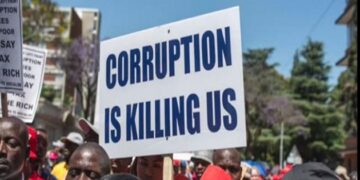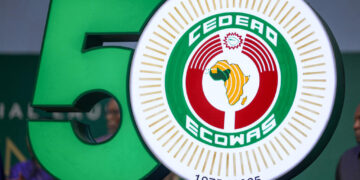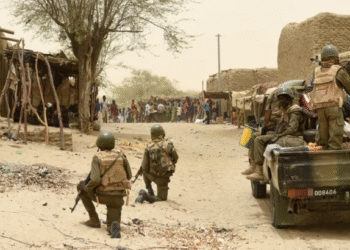A recent report by Miningweekly.com notes that Russia is aiming to take over uranium assets in Niger that a state-controlled French company currently holds. The report said Rosatom, Russia’s state nuclear company, has been in contact with Niger’s military-led authorities regarding the acquisition of assets held by France’s Orano. In 2022, Niger accounted for approximately 4% of global uranium mine production, according to the World Nuclear Association. Following a coup last July that ousted the West African nation’s Western-allied leader, Niger has become the latest in a series of African countries, nearly all military-ruled, to establish closer security ties with Russia. This development has allowed Moscow to seek access to mining interests as it attempts to revive its Soviet-era presence in Africa, particularly by capitalising on widespread resentment towards France’s long standing influence in its former colonies.
Russia’s forays into Africa
In July 2023, after the second Russia-Africa Summit in St Petersburg, Vladimir Putin declared: “Russia’s attention to Africa is steadily growing.” At the summit, both parties agreed to promote a multipolar world order and combat “neo-colonialism.” Putin also stressed the shared determination of both parties to counter neo-colonialism, illegitimate sanctions and any attempts to undermine traditional moral values.
Russia’s overtures to Africa are not a new phenomenon. For years, the Kremlin has actively engaged with the continent both diplomatically and economically. Additionally, Russia has offered security services through the Wagner mercenary army to assist African governments in combating armed groups. However, it seems Putin is now seeking to elevate this relationship. During the summit, he reiterated Russia’s commitment to a continuous supply of grain to African nations both on a contractual and free of charge basis. He said Burkina Faso, Zimbabwe, Mali, Somalia, the Central African Republic and Eritrea would receive between 25,000 and 50,000 tonnes of grain free of charge within the next three to four months, including free delivery.
Putin spoke about Africa’s energy sector and expressed a desire for further cooperation with African countries in the development of the sector, recalling historical projects under which Soviet and Russian specialists designed and built large energy centres across the continent. He mentioned ongoing projects and a commitment to providing Africa with access to sustainable and reliable energy sources. Additionally, Putin announced agreements to improve cooperation on aid and trade, including the use of national currencies for commercial transactions, and pledged to forgive Africa’s debts.
In his article titled “Russia and Africa: Joining Efforts for Peace, Progress and a Successful Future” on the Kremlin’s official website, outlining his vision for Russia’s relationship with Africa, Putin emphasised the historical ties between Russia and Africa, recalling support for African liberation movements and assistance in developing statehood, sovereignty, and defence capabilities. Putin also highlighted the significant infrastructure and industrial projects completed with Russian assistance and the education and training provided to tens of thousands of African professionals.
Putin differentiated Russia’s approach to Africa from that of the West, stating that Russia respects the sovereignty of African states and their right to determine their own destinies. He highlighted the constructive and forward-looking partnership between Russia and Africa, which he believes will contribute to a more just and democratic multipolar world order.
Putin acknowledged the challenges Africa faces due to global instability and therefore stressed the importance of the partnership between Russia and Africa in shaping a mutually beneficial and non-discriminatory agenda for cooperation.
The Russian leader spoke about the increase in Russia’s trade turnover with African countries which he said, reached nearly $18 billion in 2022 and has the potential for further growth. He mentioned various sectors where Russian companies are interested in expanding their activities, including advanced technologies, geological exploration, energy, mining, and agriculture.
While Putin’s overtures to Africa may seem generous, they are likely driven by strategic interests. Russia, like China, is making significant inroads in Africa and challenging the dominance of Europe and the United States in trade and cooperation with Africa. The Wagner Group’s presence in several African countries further solidifies Russia’s influence in the region. The question remains whether Africa is merely a playground for external powers or if it can navigate these relationships to its own benefit. One thing is clear though: Africa’s resources and strategic position make the continent a valuable partner for superpowers seeking to expand their influence on the continent.
Russia’s interest in Africa is three-fold
Putin’s interest in Africa appears to be three-fold: military, diplomatic, and economic. According to the Council on Foreign Relations, Russia not only seeks to expand its weapons trade to the continent but also establish and firm up Moscow’s operational footprints on the continent by signing agreements for new military bases. So far, Moscow has an agreement with Sudan to set up a naval port in that country.
Russia is seeking a dominant presence and influence not only in Africa, but the rest of the world. Putin is seeking to form a multipolar world order to dilute and nullify the current bipolar order where the US and its allies dictate what the rest of the world must kowtow to.
Cfr.org quotes the Congressional Research Service as noting that Russia, economically, is not a powerhouse in Africa, since less than one per cent of Moscow’s foreign direct investment goes to the continent. Its $18 billion worth of trade with African countries also lags far behind the United States’ $64 billion and China’s $254 billion. Putin’s objective obviously, is to shore up Moscow’s economic standing with Africa and the fastest way to catch up with its Western competitors and China, is by gaining access to the continent’s natural resources such as gold, diamonds, uranium and oil.
Russia seeking to exploit Africa’s uranium to bolster its nuclear power dominance
As a nuclear powerhouse, uranium is of crucial importance to Russia – and Africa has an abundance of it. Wisevoter.com describes uranium as a chemical element crucial to the creation of nuclear energy. It is highly radioactive with a long, half-life and is used as a fuel source in nuclear reactors as well as a key component in the manufacture of nuclear bombs and warheads.
The Federation of American Scientists (FAS), according to the Arms Control Association, estimates that Russia’s military stockpile consists of approximately 4,380 nuclear warheads, with 1,200 additional retired warheads awaiting dismantlement, as of March 2024. According to the September 2022 New START declaration, Russia deploys 1,549 strategic warheads on 540 strategic delivery systems (intercontinental ballistic missiles, submarine-launched ballistic missiles, and heavy bombers).
Due to Russia’s suspension of the New START Treaty in February 2022, it did not fulfil its treaty obligations to provide updated data. However, both Russia and the United States have committed to adhering to treaty limits until 2026. The U.S. intelligence community assesses that as of December 2022, Russia also maintains an arsenal of 1000-2000 non-strategic nuclear warheads not limited by the New START Treaty.
By comparison, the Arms Control Association says the United States, according to the March 2023 New START declaration, deploys 1,419 strategic nuclear warheads on 662 strategic delivery systems (intercontinental ballistic missiles, submarine-launched ballistic missiles, and heavy bombers). The United States also has an estimated 100 B-61 nuclear gravity bombs that are forward-deployed at six NATO bases in five European countries: Aviano and Ghedi in Italy; Büchel in Germany; Incirlik in Turkey; Kleine Brogel in Belgium; and Volkel in the Netherlands. On October 5, 2021, the U.S. State Department issued a declassification announcement indicating that the total number of U.S. “active” and “inactive” warheads is 3,750 as of September 2020. The stockpile figures do not include retired warheads and those awaiting dismantlement. FAS estimates the current military stockpile of the US stands at 3,708 warheads, with 1,336 retired warheads awaiting dismantlement, for a total of 5,044 warheads as of May 2024.
As far as the numbers for China are concerned, independent researchers estimate that the communist country has approximately 440 nuclear warheads for delivery by land-based ballistic missiles, sea-based ballistic missiles, and bombers. Of that total, they estimate China has approximately 206 strategic launchers (intercontinental ballistic missiles and submarine-launched ballistic missiles.) Additional warheads are thought to be in production to eventually arm additional road-mobile and silo-based missiles and bombers. It says since the 1990s, China has continually modernised its nuclear forces, though the number and types of weapons fielded have expanded significantly in recent years. As of October 2023, the Defense Department of the Unites States assessed that China has a total of 500 nuclear weapons and, if it remains on its current trajectory, may have up to 1000 deliverable nuclear warheads by 2030.
France, on the other hand, has a military stockpile of 290 operational warheads available for deployment on 98 strategic delivery systems, as of January 2022. This consists of 48 submarine-launched ballistic missiles, and 50 air-launched cruise missiles allocated for dual-capable land and carrier-based fighter aircraft. The French government has committed to a long-term modernisation program for its nuclear forces but does not plan to increase the size of its nuclear stockpile.
The United Kingdom, as of January 2022, has a military stockpile of 225 warheads, of which an estimated 120 are operationally available for deployment on 48 submarine-launched ballistic missiles, and 105 are in storage. The UK possesses a total of four Vanguard-class Trident nuclear-powered ballistic missile submarines, which together form its exclusively sea-based nuclear deterrent.
Africa’s uranium assets
Uranium is a chemical element found within the crust of the Earth and is primarily extracted through underground mining. Uranium is very unevenly distributed throughout the earth, leaving some countries with a lion’s share to export and earn from. The country with the largest export and reserves of uranium is currently Kazakhstan, producing and exporting a total of 46% of the world’s uranium. However several African countries, including Niger, are also major producers of uranium.
According to the World Nuclear Association, Uranium was discovered at Azelik in Niger in 1957 by the French Bureau de Recherches Geologiques et Minières (BRGM), looking for copper. The French Atomic Energy Commission (CEA) initiated further studies. Further discoveries in sandstone followed including at Abokurum (1959), Madaouela (1963), Arlette, Ariege, Artois & Tassa/Taza (1965), Imouraren (1966) and Akouta (1967). In 1964 the coal deposit of Thirozerine was also discovered. It is currently operated by SONICHAR and produces electricity for the northern Agadez region, including the uranium mines.
Historically, uranium mining in Gabon has been closely linked with Niger due to the role of the French Atomic Energy Commission and Cogema (now Orano). In 2021 Niger produced 2,248 tU, and cumulative production from the country was about 150,000 tU to the end of 2019. Niger has Africa’s highest-grade uranium ores. It produced 2,020 metric tonnes of uranium in 2022, about 5% of world mining output. Uranium is mined close to the twin mining towns of Arlit and Akokan, 900 km northeast of the capital Niamey (more than 1200 km by road) on the southern border of the Sahara desert and on the western range of the Air mountains. The concentrates are trucked 1600 km to Parakou in Benin, then railed 400 km to Cotonou port and exported for conversion, mostly to Comurhex in France.
Apart from Niger, the World Nuclear Association lists other uranium-rich African countries as Algeria, Botswana, Central African Republic, Democratic Republic of Congo, Gabon, Guinea, Equatorial Guinea, Malawi, Mali, Mauritania, Morocco, Namibia, Nigeria, Senegal, South Africa, Tanzania, Zambia and Zimbabwe. Namibia is among the world’s three biggest producers of Uranium, the first two being Kazakhstan and Canada.
According to Statista, Namibia led the uranium production in Africa as of 2021, with an output of 5,400 metric tonnes. Niger followed: the production stood at 2,642 metric tonnes in the country. Overall, Africa had the second-largest uranium production in the world that same year. In 2023, Kazakhstan led the global uranium production with 22,967 t, followed by Australia (7,273 t), Namibia (6,382 t), Canada (4,817 t), Uzbekistan (4,127 t), Niger (3,527 t), Russia (3,356 t), People’s Republic of China (2,223 t), Ukraine (877 t), India(472 t), South Africa (131 t), Pakistan (53 t), Czech Republic (29 t), Brazil (20 t), Germany (8 t) and the United States of America (7 t).
Analysis
Russia has a lot to benefit from Africa in terms of uranium alone, which is crucial for its dominance in the nuclear power sphere. There would be nothing special about Russia, geopolitically and in terms of global power play, without its nuclear power status. It is imperative for Putin to look to where the raw materials for Moscow’s nuclear strength can be consolidated – and it just happens to be Africa – where he can easily leverage the continent’s poverty, bad governance, poor leadership, corruption and undemocratic tendencies to feed his country’s nuclear power needs.
For Putin, who is more of a Czar than anything that resembles a democratic leader, a tango with African countries whose leaders are, somewhat a splitting image of his undemocratic credentials, is a perfect dance for Russia’s nuclear supremacy. ‘Just throw some much-needed grains at the poor hungry Africans and they will gladly surrender their resource sovereignty to me’, seems to be his plan. And, indeed, after the free grain overture, he is slowly starting to gain control over Africa’s natural resources – at least those that are strategic for Russia’s military, economic and diplomatic interests. It’s a quid-pro-quo strategy that seems to be working perfectly for Putin, especially as he feeds on anti-Western sentiments against France and the United States by most of the military-led juntas on the continent.
After militarily conquering Mali, Niger, Burkina Faso and other Sahelian countries through the Wagner Group, which has now metamorphosed into the African Corps, Putin has shifted gears and is aiming higher by seeking to colonise many a willing African country, who, in their quest to free themselves from a former colonial master, appear to be doing the worst harm to themselves by acquiescing, in broad daylight, to another ‘slave master’, who, like a Greek bearing gifts, has far worse ulterior motives that could cost the lives of several unborn generations of Africans. Putin is playing a smart game by making the Africans believe they can use him and Russia to spite France and the rest of the West, with whom Putin himself has issues. But it is all a trap of convenience which the Africans, if ever, would only come to realise too late. The ongoing African-Russian roulette, appears convenient for each side, for now. But, as has been the trend in history, Africa – almost always – ends up as the butt of the joke. It is a lopsided game from the beginning, except the Africans have been blinded to that fact by short-term reliefs. When the endorphins wear off, reality will set in and the chips will fall where they may.































